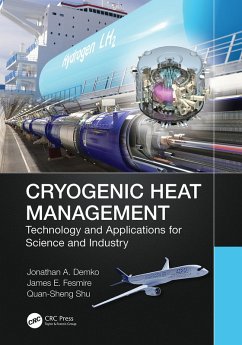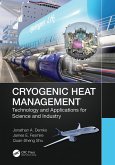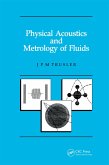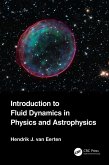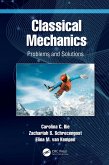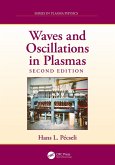Cryogenic engineering (cryogenics) is the production, preservation, and use or application of cold. This book presents a comprehensive introduction to designing systems to deal with heat - effective management of cold, exploring the directing (or redirecting), promoting, or inhibiting this flow of heat in a practical way.
Dieser Download kann aus rechtlichen Gründen nur mit Rechnungsadresse in A, B, BG, CY, CZ, D, DK, EW, E, FIN, F, GR, HR, H, IRL, I, LT, L, LR, M, NL, PL, P, R, S, SLO, SK ausgeliefert werden.
The book titled Cryogenic Heat Management recently published by CRC, Taylor & Francis, is a very useful reference for scientists and engineers working with low temperatures and facing the variety of problems of heat management. This field is huge and span from high energy physics experiments to space technology, from the transport and storing of liquid gasses to their management by the final users. Depending on the application in term of temperature, size and project specifications very different solutions have been implemented making use of a large variety of materials and technologies.
Based on their great experience in the field, after a clear introduction on heat transfer, the authors address in the first chapters of the book the general problem of cryogenic heat management discussing separately a few common topics: insulation, supports, thermals shields, transfer pipes, storage vessels and vacuum. This choice looks very efficient and makes clear the comparison among the different solutions, each one tightly linked to its specific project. Comparative tables, pictures, and schematics, together with a consistent bibliography, are guiding the reader. In each chapter the specific common topic is addressed through real examples from first-class applications taken from aerospace, large science infrastructures and nuclear fusion, but also from the management and clean transport of the huge quantity of Liquid Natural Gas around the world. Comparison with more common applications in medicine and industry are always part of the discussion.
The second part of the book, from chapter 8 to chapter 13, is dedicated to instrumentation, cryogenic measurements, and a few special topics, discussing their importance and criticalities. I found of particular interest the discussion on current leads and RF couplers. These items are crucial in some important applications, but both represent an unavoidable penetration that creates a direct connection from the cold-mass and the room temperature. Finally, the description of thermal switches and special cryostats for extreme applications are noteworthy too. This final part of the book is very interesting and completes the knowledge transfer from the expert authors to the readers who are expected being involved in the design, choice, or operation of a cryogenic apparatus where the deep understanding of the cryogenic heat management is crucial.
- Professor Carlo Pagani, University of Milano and INFN Emeritus Scientist, 23/08/2022.
Based on their great experience in the field, after a clear introduction on heat transfer, the authors address in the first chapters of the book the general problem of cryogenic heat management discussing separately a few common topics: insulation, supports, thermals shields, transfer pipes, storage vessels and vacuum. This choice looks very efficient and makes clear the comparison among the different solutions, each one tightly linked to its specific project. Comparative tables, pictures, and schematics, together with a consistent bibliography, are guiding the reader. In each chapter the specific common topic is addressed through real examples from first-class applications taken from aerospace, large science infrastructures and nuclear fusion, but also from the management and clean transport of the huge quantity of Liquid Natural Gas around the world. Comparison with more common applications in medicine and industry are always part of the discussion.
The second part of the book, from chapter 8 to chapter 13, is dedicated to instrumentation, cryogenic measurements, and a few special topics, discussing their importance and criticalities. I found of particular interest the discussion on current leads and RF couplers. These items are crucial in some important applications, but both represent an unavoidable penetration that creates a direct connection from the cold-mass and the room temperature. Finally, the description of thermal switches and special cryostats for extreme applications are noteworthy too. This final part of the book is very interesting and completes the knowledge transfer from the expert authors to the readers who are expected being involved in the design, choice, or operation of a cryogenic apparatus where the deep understanding of the cryogenic heat management is crucial.
- Professor Carlo Pagani, University of Milano and INFN Emeritus Scientist, 23/08/2022.

